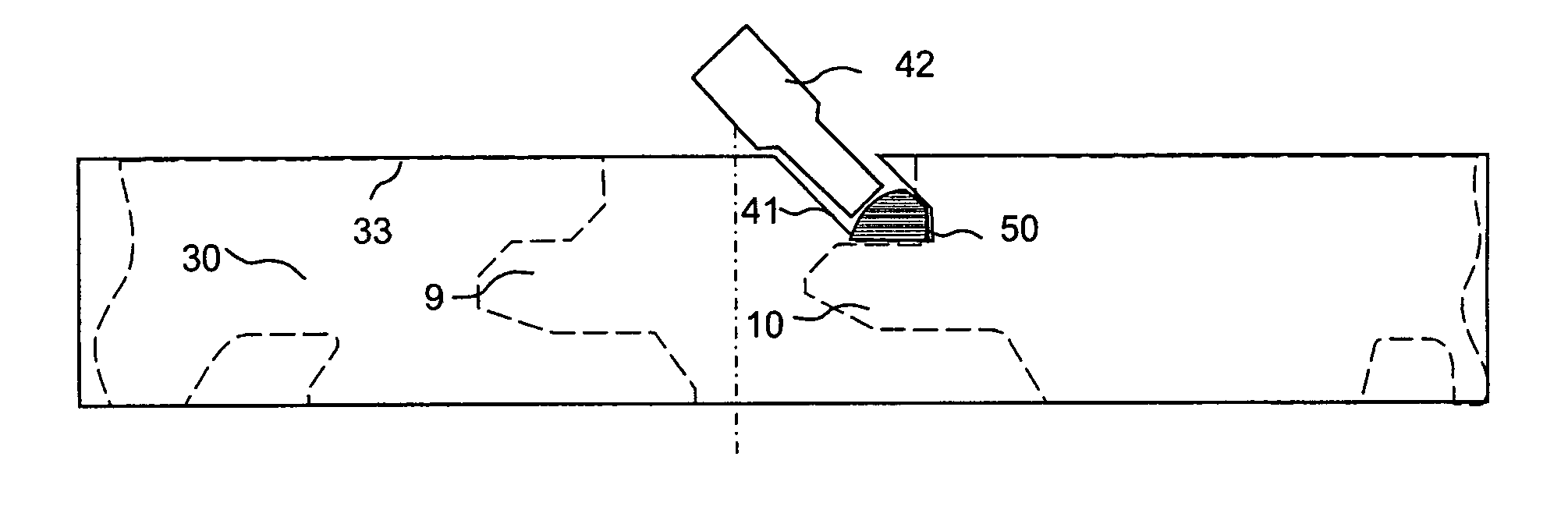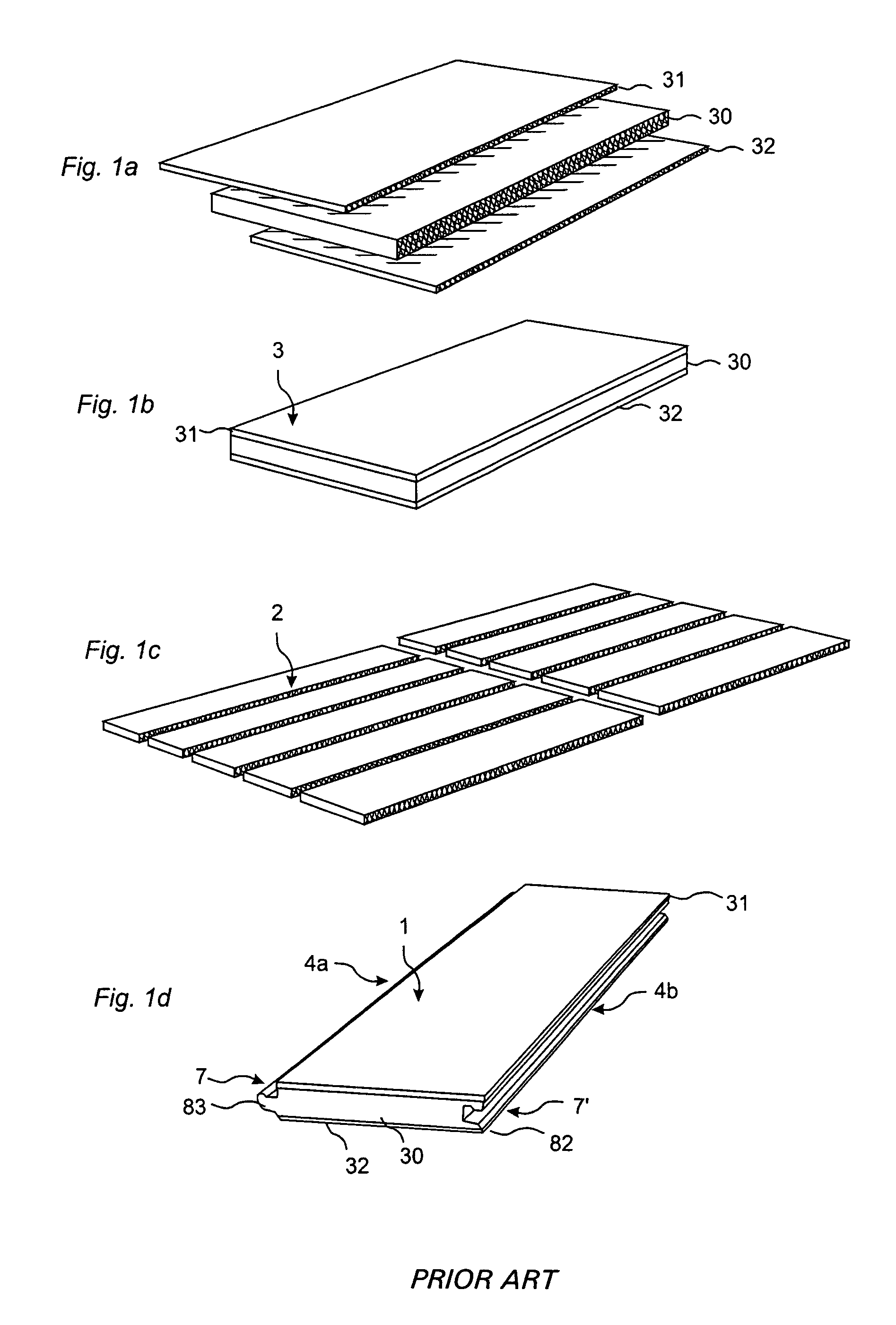Floor panel with sealing means
a technology of floor panels and sealing means, which is applied in the direction of walls, building repairs, transportation and packaging, etc., can solve the problems of unsatisfactory cost and unsatisfactory known solutions to problems caused by moisture in connection with floor panels and floor materials
- Summary
- Abstract
- Description
- Claims
- Application Information
AI Technical Summary
Benefits of technology
Problems solved by technology
Method used
Image
Examples
Embodiment Construction
[0096]FIGS. 1a-d illustrate in four steps the manufacture of a floor panel. FIG. 1a shows the three main components surface layer 31, core 30 and balancing layer 32. FIG. 1b shows a floor element 3, where the surface layer and the balancing layer have been applied to the core. FIG. 1c shows how floorboards 2 are made by dividing the floor element. FIG. 1d shows how the floorboard 2 after edge machining obtains its final shape and becomes a completed floor panel 1 with a joint system 7, 7′ on the long sides 4a, 4b, which joint system in this case is mechanical.
[0097]FIG. 2a shows manufacture of high pressure laminate. A wear layer 34 of a transparent material having a high wearing strength is impregnated with melamine with addition of aluminum oxide. A decorative layer 35 of paper impregnated with melamine is placed under this layer 34. One or more layers of reinforcement layers 36a, 36b made of paper core and impregnated with phenol are placed under the decorative layer 35, and the ...
PUM
| Property | Measurement | Unit |
|---|---|---|
| thick | aaaaa | aaaaa |
| speeds | aaaaa | aaaaa |
| thickness | aaaaa | aaaaa |
Abstract
Description
Claims
Application Information
 Login to View More
Login to View More - R&D
- Intellectual Property
- Life Sciences
- Materials
- Tech Scout
- Unparalleled Data Quality
- Higher Quality Content
- 60% Fewer Hallucinations
Browse by: Latest US Patents, China's latest patents, Technical Efficacy Thesaurus, Application Domain, Technology Topic, Popular Technical Reports.
© 2025 PatSnap. All rights reserved.Legal|Privacy policy|Modern Slavery Act Transparency Statement|Sitemap|About US| Contact US: help@patsnap.com



